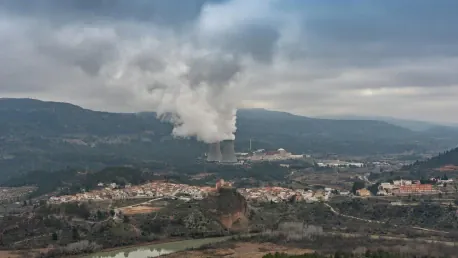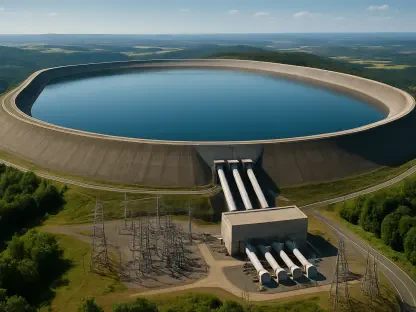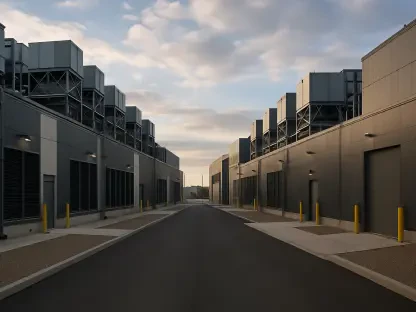TerraPower’s Kemmerer Power Station Unit 1 project has reached a significant milestone with the U.S. Nuclear Regulatory Commission (NRC) completing its draft safety evaluation (SE) a month ahead of schedule. This 345-MW sodium-cooled fast reactor (SFR) is currently under development in Wyoming, and the early completion of the draft SE signals the NRC’s commitment to a thorough review of the reactor’s safety features and design. The Kemmerer Power Station Unit 1 is part of the Department of Energy’s Advanced Reactor Demonstration Program (ARDP), which is backed by up to $2 billion in authorized funding. The plant aims to showcase TerraPower’s first Natrium reactor, a hybrid nuclear facility integrating a nitrate molten salt-based energy storage system. This integration could potentially boost the system’s output to between 100 MWe and 500 MWe for over 5.5 hours when needed, with a ramping capability of 10% per minute.
Addressing Outstanding Issues
The NRC’s draft safety evaluation highlights several outstanding issues that TerraPower must address for the project to proceed smoothly. These issues span different technical areas, including materials qualification for environmental compatibility, special treatment requirements for safety-significant structures, systems, and components, as well as the seismic and structural design approach for non-safety-related systems. Furthermore, the NRC has requested additional documentation on the use of Probabilistic Risk Assessment (PRA) within the Licensing Modernization Project (LMP) and other licensing programs. This focus on PRA by the NRC underscores the agency’s commitment to risk-informed regulatory approaches for non-light water reactors, which are critical to the success and safety of innovative nuclear technologies like the Natrium reactor.
The proactive engagement between the NRC and TerraPower has been pivotal in completing the draft SE ahead of schedule. The extensive pre-application discussions and ongoing technical exchanges between the two entities facilitated this accelerated timeline, demonstrating the benefits of early and continuous collaboration. By addressing the identified open items, TerraPower can streamline multiple parts of the evaluation, further enhancing efficiency in future reviews of similar applications. This collaboration sets a precedent for the regulatory process, ensuring that it remains rigorous yet adaptable to accommodate pioneering technologies.
Timeline and Future Implications
TerraPower anticipates receiving NRC approval by late 2026, paving the way for nuclear construction to commence in early 2027. The review process for the Kemmerer Power Station Unit 1 is positioned as a vital learning opportunity for both TerraPower and the NRC. The lessons learned from this project are expected to yield improvements that will be applicable to future reactor applications, including those from other vendors. The early completion of the draft SE is not only a testament to the NRC’s regulatory rigor but also a reflection of the collaborative efforts between the regulatory body and TerraPower, indicating a promising trajectory for the project’s completion and the advancements in nuclear technology that it represents.
The broader implications of this project’s advancement are significant for the nuclear industry as a whole. TerraPower’s innovative reactor design and the accompanying regulatory process could serve as a model for future nuclear projects. The collaboration between TerraPower and the NRC exemplifies how regulatory bodies can adapt to and facilitate the development of next-generation nuclear technologies. With the Natrium reactor’s potential to provide flexible, reliable energy as part of a clean energy grid, the successful completion of the Kemmerer Power Station Unit 1 could mark a turning point in the adoption of advanced nuclear technologies across the United States and beyond.
Conclusion
The NRC’s draft safety evaluation indicates several key issues that TerraPower must resolve for seamless project progress. These issues span technical areas like materials qualification for environmental compatibility, special treatment necessities for safety-critical structures, systems, and components, and the seismic and structural design of non-safety systems. Additionally, the NRC seeks more documentation on the use of Probabilistic Risk Assessment (PRA) in the Licensing Modernization Project (LMP) and other licensing efforts. This attention to PRA underscores the NRC’s commitment to risk-informed regulatory approaches, which are essential for the safety and success of innovative nuclear technologies like the Natrium reactor.
The proactive collaboration between the NRC and TerraPower was crucial to completing the draft Safety Evaluation (SE) ahead of schedule. The extensive pre-application discussions and ongoing technical exchanges between both parties facilitated this faster timeline, highlighting the benefits of early and continuous collaboration. By addressing the identified open items, TerraPower can streamline future evaluations, enhancing overall efficiency. This sets a precedent for rigorous yet adaptable regulatory processes that can accommodate pioneering technologies.









